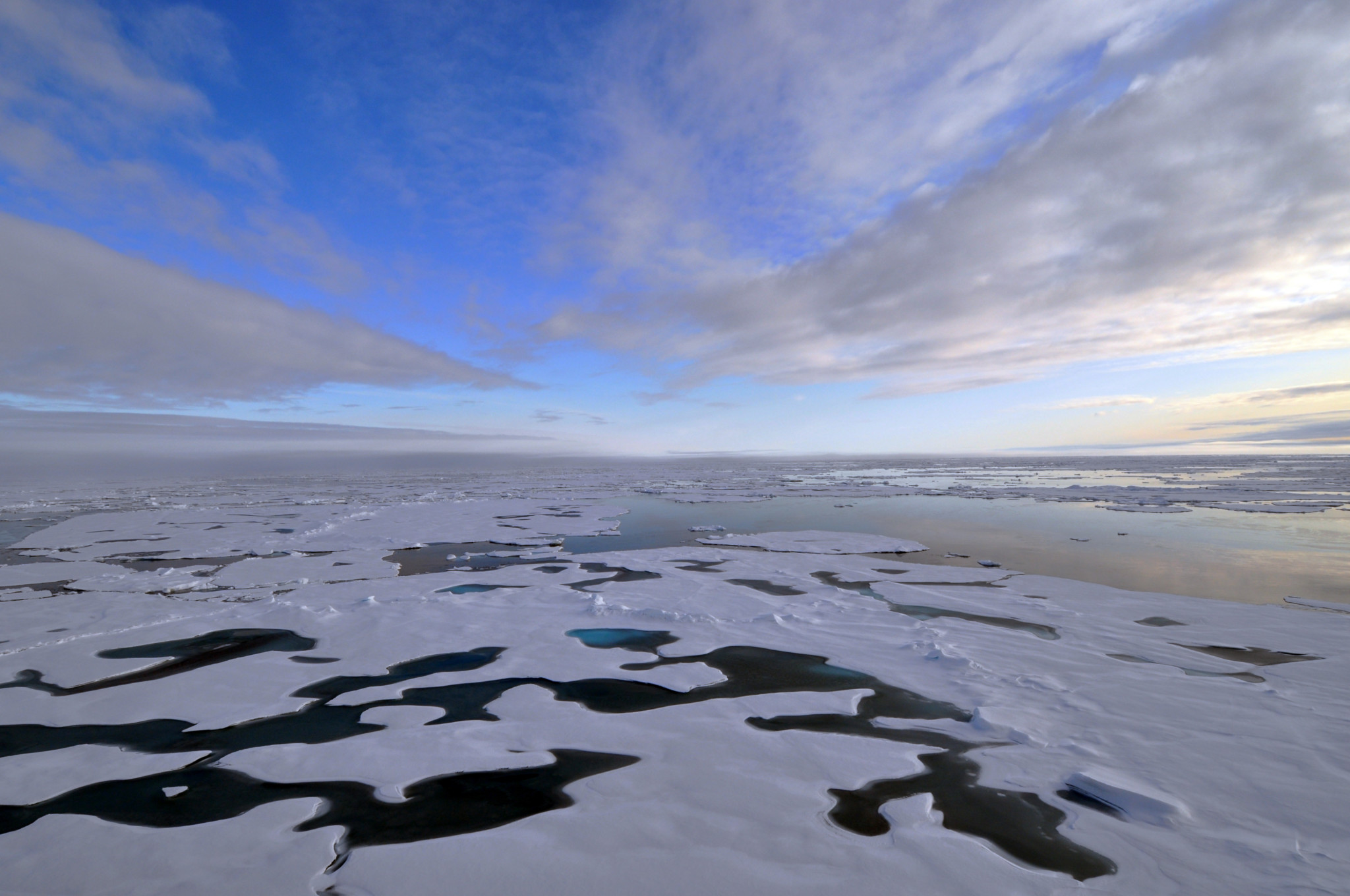Receding ice and warming waters have drawn the interest of many nations with direct access to the Arctic Ocean. After several years of consideration, nine nations and the European Union agreed to a moratorium on commercial fishing across 1.1 million square miles of the Arctic.
“Prior to this agreement,” reads a statement from the U.S. State Department, [https://www.state.gov/r/pa/prs/ps/2018/10/286348.htm] “no legally binding international agreement existed to manage potential fishing in the high seas of this region."
The agreement – signed by the United States, Russia, Canada, Norway, Denmark, Iceland, Japan, South Korea and China, plus the European Union — was sealed at a Central Arctic Ocean ceremony in Greenland in early October.

Arctic sea ice extent for September 23, 2018 was 4.59 million square kilometers (1.77 million square miles). The orange line shows the 1981 to 2010 average extent for that day.
National Snow and Ice Data Center image.
"Ice has traditionally covered the high seas of the central Arctic Ocean year-round. Recently, the melting of Arctic sea ice has left large areas of the high seas uncovered for much of the year," the statement says. "As a result, commercial fisheries in the central Arctic Ocean may become viable in areas where such activity was previously not possible.”
The moratorium agreement, which will be in place for at least the next 16 years, builds on protections put into place by the United States in 2009, when the country closed its exclusive economic zone north of Alaska to commercial fishing until "domestic fisheries managers have sufficient information about the ecosystem to allow fishing to proceed on a well-regulated basis."
Sea ice in the Arctic reached its annual minimum on Sept. 19 and 23, according to the National Snow and Ice Data Center. [http://nsidc.org/arcticseaicenews/2018/09/arctic-sea-ice-extent-arrives-at-its-minimum/] At 4.59 million square kilometers, sea ice extension in 2018 tied with 2008 and 2010 for the sixth lowest minimum extent in the nearly 40-year satellite record. The 12 lowest in the satellite era have occurred in the last 12 years.
The agreement between nations also kickstarts the development of a joint scientific research program to monitor the region. The moratorium can be extended in five-year increments based on scientific findings.







